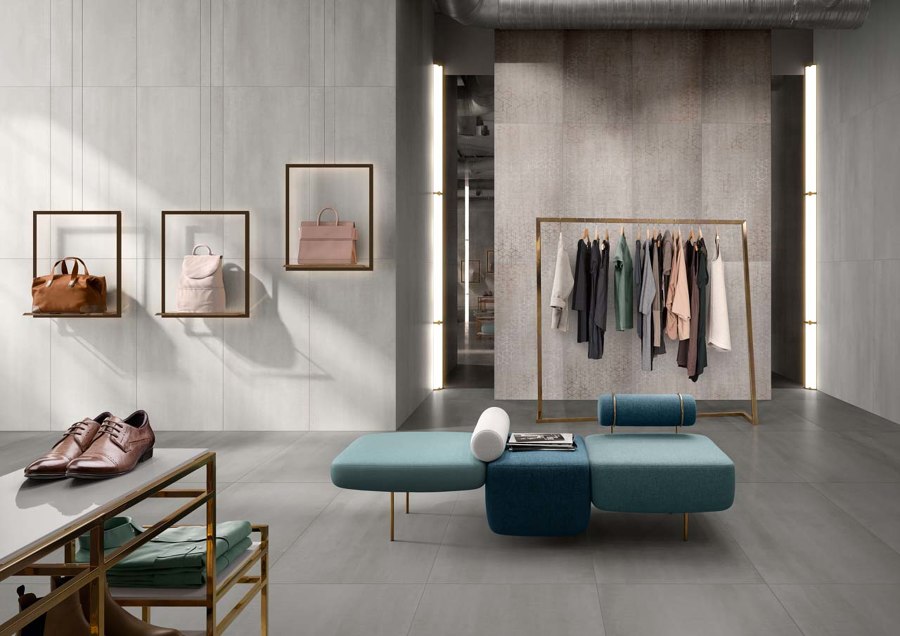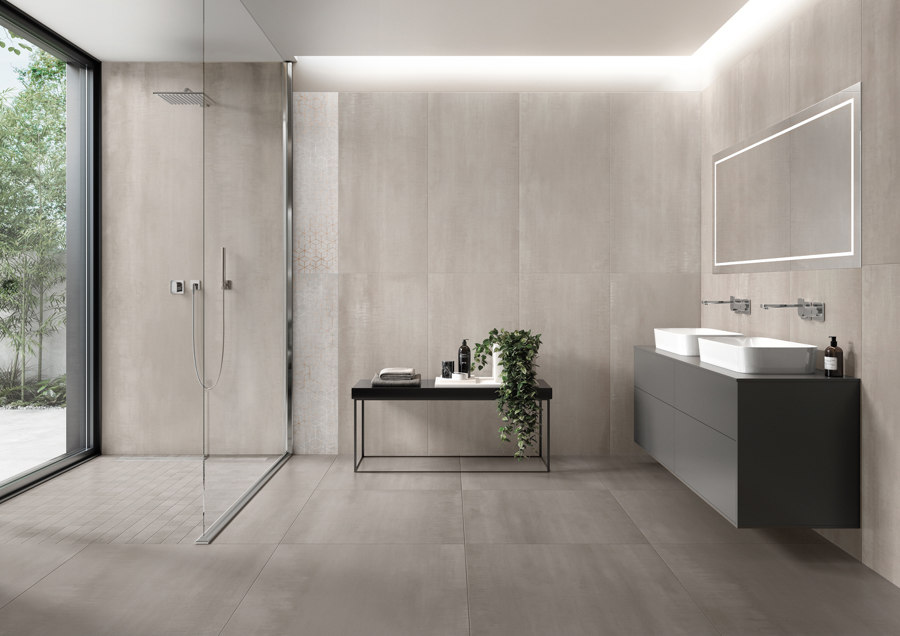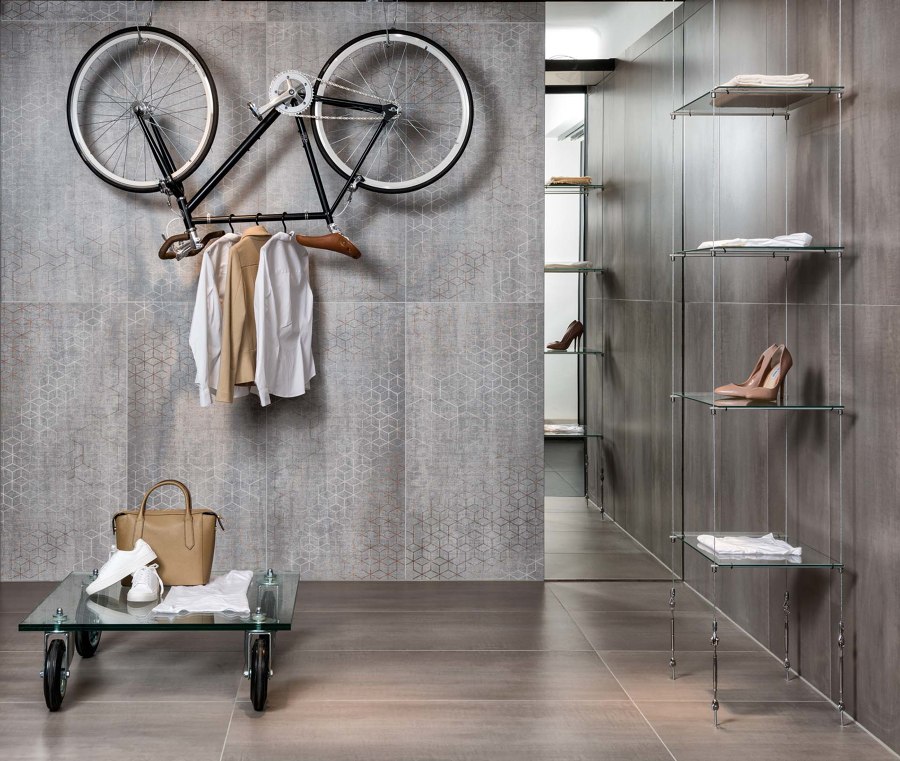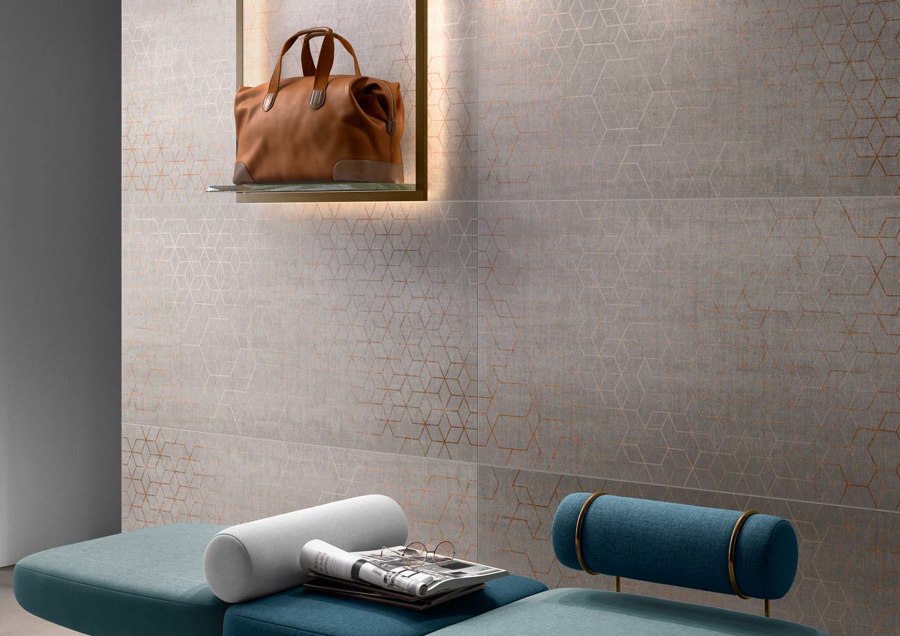Fashion that’s never out of fashion: Villeroy & Boch
Brand story by Gerrit Terstiege
Merzig, Germany
28.04.20
While certain room elements are more susceptible to the whims of fashion, walls and floors often have more permanent natures. With their METALYN tile series, however, Villeroy & Boch show that the two are not mutually exclusive, as they effortlessly meld the timeless with the modern.
A tile series with a homely character: METALYN can also be convincingly applied in retail environments

A tile series with a homely character: METALYN can also be convincingly applied in retail environments
×One is often surprised by the extent to which a room can be changed as a result of the right choice of wall design. The reason for this is the usually large area that walls – even in small rooms – take up. And so, every design decision for a colour, a certain pattern or material of wall covering has crucial influence on the overall effect of a room. The coming and going of design trends is particularly visible in bathrooms, as they affect not only walls but floors, fittings, furniture and textiles.
'A glance back through history shows that bathrooms have been decorated with repetitive patterns, lines and ornaments, right up to naturalistic mosaics since ancient times'
But a glance back through history shows that bathrooms have been decorated with repetitive patterns, lines and ornaments, right up to naturalistic mosaics since ancient times. The mosaics still preserved today in ancient Roman bath ruins display a great variety of abstract, geometric patterns that formally structured the walls, ceilings and floors of the former baths. As you can see, even the ancient Romans had high aesthetic standards in the bathroom – well beyond function and utility value.
The unique selling point of the series is the pattern developed by Villeroy & Boch Fliesen: Discreet, weathered-looking rhombus and cube shapes create a surprising trompe-loeil effect

The unique selling point of the series is the pattern developed by Villeroy & Boch Fliesen: Discreet, weathered-looking rhombus and cube shapes create a surprising trompe-loeil effect
×Even today, the choice of wall cladding in bathrooms or living rooms always includes a long-term dimension. Architects and interior designers are aware of the responsibility they bear when they propose a certain form of wall design to their clients, because they should be enjoyed for an extended period of time. Many other elements in the bathroom can be easily replaced but with walls in particular, it is important to find a balance between trend and timelessness, between aesthetic topicality and durability.
With its METALYN tile series, Villeroy & Boch has succeeded in achieving precisely this balance. This has been achieved by subtly combining the appearance of two classic materials of contemporary architecture: metal and concrete. METALYN thus builds a bridge to other colours and materials found in a particular room and, most importantly, its design can complement both purist and more extravagant interiors. Moreover, it can be used not only in the bathroom but also in living rooms, hotel bathrooms, lobbies and even shops.
METALYN subtly combines the look of two classic materials used in contemporary architecture: metal and concrete

METALYN subtly combines the look of two classic materials used in contemporary architecture: metal and concrete
×The basic ‘vilbostone porcelain stoneware’ tiles can be used for both walls and floors and are available in six coordinated, deliberately matt colours: Silver, Pearl, Iron, Steel, Oxide and Bronze. The basic tiles are available in the formats 30 x 60 cm, as squares in 60 x 60 cm and 80 x 80 cm and as rectangles (30 x 60 and 60 x 120 cm). The large formats of the METALYN OPTIMA series are available in XXL sizes 120 x 120 cm and even 120 x 260 cm. This means that an ideal format can be found for every wall height, with the larger tile variants in particular able to bring calm and clarity to surfaces – an effect that often cannot be achieved with smaller elements and subsequently created joints.
'The METALYN tile series subtly combines the appearance of two classic materials of contemporary architecture: metal and concrete'
The metallic-seeming tiles have an anodised appearance and can be used in either one colour or combined with other different colours. This is because the respective colour gradations are selected in order that they harmonise with one other. Regardless of which variant is chosen, you can be confident that a harmonious overall picture will be created: an engaging dialogue with a clear, contemporary architectural language. METALYN tiles can naturallly be added as surface elements, but can of course also be laid in a strip.
An ideal format can be found for any wall height, with the large tile elements in particular bringing calm and clarity to the surface – an effect that often cannot be achieved with smaller tile elements and joints

An ideal format can be found for any wall height, with the large tile elements in particular bringing calm and clarity to the surface – an effect that often cannot be achieved with smaller tile elements and joints
×A particular and unique feature of the METALYN range is its pattern. Developed by Villeroy & Boch Fliesen, it matches all basic tile colours: rust-coloured rhombuses and cubes with a discreet, used look create a surprising trompe-loeil effect which changes depending on both the incidence of light and the perspective of the observer. This creates ever new, three-dimensional forms: the wall itself thus possesses a visual appeal whose geometric structure is reminiscent of works by Op Art artists such as Victor Vasarely or Heinz Mack.
Despite this 'special effect', which invites one to look, a room wholly or partially lined with METALYN retains a formal calm, because the consistent pattern does not play itself into the foreground, rather it only becomes recognisable at second glance; an important aspect – particularly in private and public wellness areas, for example, where the eye also wants to relax. One wonders what the ancient Romans would have made of it all.
© Architonic








